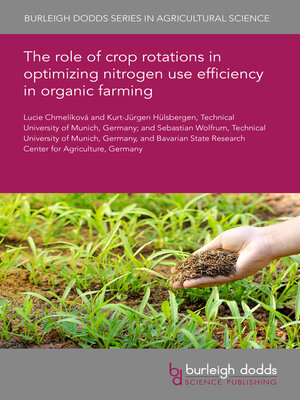The role of crop rotations in optimizing nitrogen use efficiency in organic farming
ebook ∣ Burleigh Dodds Series in Agricultural Science
By Dr Lucie Chmelikova

Sign up to save your library
With an OverDrive account, you can save your favorite libraries for at-a-glance information about availability. Find out more about OverDrive accounts.
Find this title in Libby, the library reading app by OverDrive.



Search for a digital library with this title
Title found at these libraries:
| Library Name | Distance |
|---|---|
| Loading... |
This chapter reviews how rotations affect nitrogen flows in organic farming. A comprehensive analysis was carried out of 91 temperate field studies published between 1990 and 2020 that included at least one organic production system. Nitrogen (N) input, N output, and final N balance data for the whole crop rotation were collated, and the information utilized for a meta-analysis of nitrogen use efficiency (NUE) of organic farming under different management regimes. The results showed that a net N surplus (i.e. where N inputs exceeded N outputs) was lowest when N outputs increased without additional N inputs by avoiding over-fertilization, including legumes in crop rotations, and/or optimizing soil tillage. Both very high and extremely low NUE were found. The NUE decreased with increasing N input. High frequency of cereals decreased NUE, whilst increased use of row crops improved NUE.







